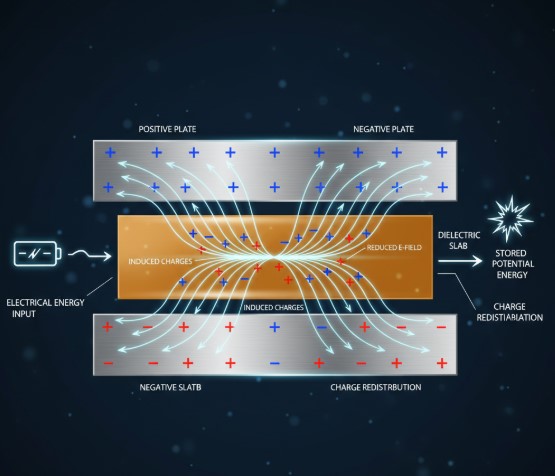This post delves into the Mars Sample Return mission, specifically examining two new strategies aiming for a return in the 2030s. The original plan faced significant challenges, including potential cost overruns and delays. These new strategies are designed to streamline the process, reduce complexity, and bring back these crucial Martian samples more efficiently. The Mars Sample Return is a vital undertaking for understanding Mars’ history and potential past life.
Table of Contents
Consequently, these new strategies prioritize efficiency and affordability, acknowledging the need for a timely return. They build upon existing technologies, such as the “sky crane” landing system, and explore partnerships with private companies. These innovative approaches, as much as possible, aim to lower costs and accelerate the mission timeline, making the Mars Sample Return mission more achievable and scientifically valuable.
We also Published
“The future belongs to those who believe in the beauty of their dreams.” – Eleanor Roosevelt
Mars Sample Return Strategies
The Mars Sample Return mission aims to bring crucial samples from Mars back to Earth by the 2030s. This ambitious project, a joint effort between NASA and the European Space Agency, faces significant challenges, including cost and complexity. NASA’s recent review of the original plan revealed a potential cost of up to $11 billion and a delayed return date. This article explores the new strategies under consideration to address these concerns and expedite the return of these valuable Martian samples. The Mars Sample Return mission is critical to understanding the history of Mars and potentially the existence of past life.
NASA is now considering two new strategies for the Mars Sample Return mission, designed to reduce complexity, cost, and mission duration. These new approaches aim to streamline the process and bring the samples back to Earth sooner. The original plan was deemed unwieldy, prompting a search for more efficient and cost-effective alternatives. The new strategies prioritize efficiency and affordability, recognizing the importance of a timely return of the samples for scientific analysis. The new strategies will help to bring back samples from Mars more efficiently.
The new strategies are a direct response to the challenges of the original plan, which were identified through an independent review board. The board’s assessment highlighted the need for a more streamlined approach to reduce costs and shorten the mission timeline. The new strategies are designed to meet these challenges head-on, with a focus on minimizing costs and maximizing the efficiency of the mission. The new strategies are intended to reduce the complexity and cost of the mission while also ensuring a timely return of the samples. These new strategies are crucial for the future of Mars exploration.
The NASA Perseverance rover has been actively collecting Martian samples since its arrival in February 2021. These samples, collected from Jezero Crater, are believed to hold crucial clues about the possibility of past life on Mars. Returning these samples to Earth is a complex undertaking, requiring multiple spacecraft for landing and transport. The new strategies will streamline this process, potentially reducing the overall cost and mission duration. The new strategies are crucial for the success of the Mars Sample Return mission.
Strategies for a Faster Return
Two primary strategies are being considered to streamline the Mars Sample Return mission. The first leverages the successful “sky crane” technology used in previous Mars landings, offering a potentially more cost-effective approach. This option aims to build upon existing expertise and technology to reduce the development time and cost of the landing system. The sky crane method has proven successful in previous missions, and its use in this mission could significantly reduce the overall cost and time of the mission. The sky crane method is a key part of the strategy for a faster return.
The second strategy focuses on utilizing new commercial capabilities and partnerships to develop a “heavy-lift vehicle” lander. This approach potentially offers greater flexibility and cost savings compared to traditional methods. Partnerships with private companies like SpaceX and Blue Origin could provide access to advanced technologies and potentially lower costs. This approach could bring in new innovations and expertise to the mission, leading to a more efficient and affordable approach. This approach could lead to a faster and more cost-effective solution for the Mars Sample Return mission.
Both strategies share a similar architectural framework, requiring a Mars Ascent Vehicle to lift the collected samples and rendezvous with an Earth Return Orbiter. This orbiter will then return the samples to Earth. This architecture ensures the samples are returned to Earth in a safe and efficient manner. The new strategies will help to streamline the process of returning samples from Mars. This architecture is designed to ensure the safe and efficient return of the samples to Earth.
NASA is exploring these strategies to optimize the return of Martian samples, ensuring the mission’s success and scientific value. The new strategies are designed to minimize risks and maximize efficiency, allowing for a faster and more cost-effective return of the samples. The new strategies will help to ensure that the mission is successful and that the samples are returned to Earth in a timely manner. These new strategies are critical for the success of the Mars Sample Return mission.
A Successful Mars Sample Return
A key aspect of the new strategies is the simplification of the original design. NASA has opted for a direct return to Earth, avoiding the more complex process of placing samples in lunar orbit. This simplification reduces the need for additional spacecraft and significantly lowers the overall mission cost. This approach is crucial for the success of the Mars Sample Return mission. This simplification is a key element of the new strategies.
The new strategies also focus on improving the landing mechanism. Both options will utilize a smaller version of the Mars Ascent Vehicle and incorporate a more robust power system to withstand Martian dust storms. This will ensure the vehicle can function reliably in the harsh Martian environment, contributing to a faster return of the samples. This improvement will enable the mission to withstand the harsh Martian environment. This will allow the mission to return the samples to Earth more efficiently.
NASA is confident that these new strategies will enable the return of all 30 samples before 2040 and at a significantly lower cost than the original estimate. The focus on engineering design for both options will allow for a more detailed understanding of the potential challenges and solutions. The agency is committed to ensuring a successful return of the samples. This confidence is based on the detailed planning and testing that is being done. The new strategies are designed to ensure the success of the mission.
The European Space Agency is actively evaluating these new plans, highlighting the collaborative nature of space exploration. This collaborative effort underscores the importance of international partnerships in achieving ambitious scientific goals. The collaboration with the European Space Agency is a key aspect of the mission. This collaboration will ensure the success of the Mars Sample Return mission.
Optimizing the Mars Sample Return
The Mars Sample Return mission is a crucial step in understanding the history of Mars and potentially the existence of past life. The new strategies offer a more streamlined and cost-effective approach to returning the samples, ensuring a timely return for scientific analysis. The new strategies are crucial for the success of the mission. The new strategies are designed to ensure the mission is a success.
The new strategies emphasize the importance of leveraging existing technologies and fostering partnerships with private companies. This approach can significantly reduce costs and accelerate the mission timeline. This approach will help to ensure the mission is successful. The new strategies will help to streamline the process and bring the samples back to Earth more efficiently.
The focus on engineering design and testing will ensure the viability of both options, addressing potential challenges and optimizing the mission’s success. This detailed approach is crucial for the success of the mission. This detailed approach is crucial for the success of the Mars Sample Return mission.
Ultimately, the success of the Mars Sample Return mission depends on securing appropriate funding and the continued commitment of the new administration. The mission’s scientific value is undeniable, and a successful return of the samples could revolutionize our understanding of Mars and the universe. The mission is crucial for understanding the history of Mars and the possibility of past life. The mission is crucial for the future of space exploration.
| Strategy | Description |
|---|---|
| Sky Crane Technology | Leverages existing “sky crane” technology for a more cost-effective Mars landing system. Builds upon proven expertise to reduce development time and cost. |
| Heavy-Lift Vehicle | Utilizes new commercial capabilities and partnerships to develop a “heavy-lift vehicle” lander. Potentially offers greater flexibility and cost savings, potentially involving partnerships with private companies like SpaceX and Blue Origin. |
| Simplified Return | Direct return to Earth, avoiding the complexity of placing samples in lunar orbit. Reduces spacecraft needs and lowers mission cost. |
| Improved Landing Mechanism | Includes a smaller Mars Ascent Vehicle and a more robust power system to withstand Martian dust storms, ensuring reliable operation in the harsh Martian environment. |
| International Collaboration | Highlights the collaborative nature of space exploration, with the European Space Agency actively evaluating the new plans. |
| Focus on Efficiency and Cost Reduction | Prioritizes streamlining the process, minimizing risks, and maximizing efficiency to ensure a faster and more cost-effective return of the samples. |
Optimizing Mars Sample Return Strategies for the 2030s
- Streamlined Strategies for a Faster Return: The original Mars Sample Return plan faced potential cost overruns and delays. New strategies are being developed to address these issues, focusing on efficiency and affordability. This is crucial for a timely return of the samples.
- Leveraging Existing Technologies and Partnerships: The new strategies aim to build upon existing technologies like the “sky crane” landing system and explore partnerships with private companies. This is a key aspect for reducing costs and accelerating the mission timeline.
- Simplified Design for Reduced Costs: A simplified approach, avoiding complex lunar orbit maneuvers, is prioritized to reduce the number of spacecraft needed and lower overall mission costs. This is a significant aspect of the new strategies.
- Improved Landing Mechanism: The new strategies focus on enhancing the landing mechanism to ensure reliability in the harsh Martian environment, potentially reducing mission duration. This is an important aspect for a successful mission.
- Collaboration and International Partnerships: The European Space Agency is actively involved in evaluating the new strategies, highlighting the importance of international collaboration in space exploration. This is crucial for achieving ambitious scientific goals.
- Scientific Importance of the Mission: The Mars Sample Return mission is vital for understanding Mars’ history and potential past life. The return of these samples holds immense scientific value.
We also Published
RESOURCES
- NASA Explores Innovative Paths for Mars Sample Return
- Mars Sample Return Mission Concept Status
- NASA’s Mars Sample Return Program Strategy Update
- Mars Sample Return, an international project…
- Mars Sample Return: the next step in exploring the Red …
- NASA Exploring Innovative Approaches to Bring Mars …
- Rocket Lab Awarded NASA Study Contract to Explore …
- ESA – Mars Sample Return
- Principles for Mars Sample Return
- NASA to study two alternative architectures for Mars …
- NASA punts decision on Mars sample return to next …








0 Comments